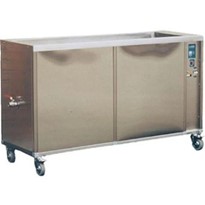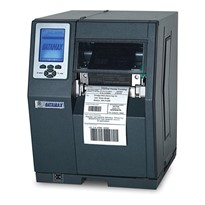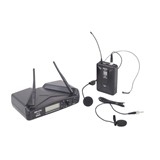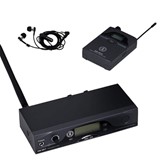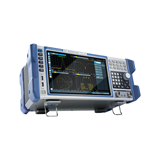The performance of wireless networks can change over time due to increased performance demands, changes in the radio frequency (RF) environment and changes in the physical environment. This article will explore the use of a wireless diagnostic OLE for Process Control (OPC) server technology to embed diagnostic information in human machine interfaces (HMIs), thus optimizing industrial wireless network performance.
Introduction
Wireless communications is becoming increasingly popular for factory and process control automation systems. Part of this growth is due to the emergence of very reliable radio frequency technologies capable of handling the extreme conditions present in industrial plants. The other factor driving growth is the realized benefits that wireless presents including reduced installation costs, elimination of phone line charges for remote sites, reduced mechanical wear to moving platforms (thus improving performance of material handling systems) and providing crucial information for production and maintenance workers wherever needed.
The acceptance of wireless strategies to reduce costs and improve productivity has lead to wireless being relied upon in many crucial processes. As more systems become dependant on wireless networks, it is important to include intelligent diagnostics to detect network degradation and prevent communication failures before they occur. Changing conditions are a given in most plants, however, those changes can affect wireless performance. Therefore the continuous monitoring of the RF network is good practice and can eliminate unexpected shut downs.
Diagnostic techniques vary greatly by industrial wireless manufacturer. There are some "industrial" wireless devices that do not include any diagnostic information at all. Either the data is received correctly or not. These are understandably very difficult to troubleshoot when problems are encountered. Other systems provide offline diagnostics where communication must be stopped in order to access the diagnostic information. These systems at least provide some insight into the cause, but only after the failure has occurred.
Online wireless diagnostics provide continuous monitoring of wireless performance and hardware conditions of the entire wireless system, local and remote. These tools can not only detect a failure, but show degrading conditions as well. Because the diagnostic metrics are being monitored in real time, there is no need to shut communications down to check the system.
However, there is no free lunch! Because the diagnostic data travels over the same wireless link as the system data, performance can degrade when diagnostics are active. In systems with a large number of remotes and high amounts of data transfer, online diagnostics may be impractical.
The methods to access online diagnostic information vary by manufacturer and wireless system. Some wireless serial systems use a second serial port and communication is done using a menu-driven interface accessible from a dumb terminal program (such as a HyperTerminal). Other online diagnostic systems use a proprietary software program where the PC attaches to either the secondary serial port or is part of the Ethernet network, and displays vital information about the RF network using a proprietary software program.
Still other systems (commonly 802.11 based) have embedded web servers for diagnostic information. The diagnostic information is then displayed using a web browser. In Ethernet-based wireless networks, potentially anyone on the Ethernet network can view the diagnostic pages of local and remote wireless equipment.
What the previously described methods lack is the ability to easily integrate diagnostic status and information directly into the control system. They are especially burdensome for plant operators that lack computer skills and technical aptitude. For example, expecting a third shift operator in a wastewater plant to understand the vendor's diagnostic program (or diagnostic web page) and diagnose the problem is probably expecting too much.
Therefore it is highly desirable to have a method for remote RF diagnostics where the control engineer can appropriately embed diagnostic data.
SNMP (Simple Network Management Protocol) is one possible way to access diagnostic information in a common approach. SNMP is a standard diagnostic language developed primarily for the management of information technology devices. SNMP provides a way for diagnostic software tools to manage and monitor devices manufactured by different vendors. While a few industrial devices now include SNMP support, most industrial software programs do not. Therefore SNMP-based management tools are not very practical for industrial wireless systems.
Integrating Diagnostics
This leads us to consider what the best method is for integrating wireless diagnostic into industrial systems. OPC (OLE for Process Control) is likely the best approach as it is a software data exchange standard developed specifically for industrial systems, and is widely deployed and supported. Using OPC as the basis for RF diagnostics provides any OPC compliant software programs (such as most major HMI and SCADA software packages) direct access to the diagnostic information. And because control engineers are well versed in developing projects using these programs, wireless diagnostic data is easily included in operator interfaces just like any other tag data point.
Using an OPC server for wireless diagnostics opens up many possibilities for monitoring and optimizing the wireless network. To fully understand the possibilities, it is first useful to examine the key diagnostic metrics that are often monitored. In RF systems, links are established between wireless devices (sometimes known as wireless access points, bridges and clients) using pre-determined RF channels and authentication routines. Each wireless device both transmits and receives (but not at the same time). When an RF signal is transmitted, it has certain amount of energy (measured in dBm, or decibels below one milliwatt). Loss occurs through the air based upon distance and if obstructions are in the way. When the signal is received at the remote antenna, the signal must be strong enough for successful data transmission. The strength of the received signal is known as RSSI (Received Signal Strength Indicator).
Another very important measurement is the noise within the channel The received signal must be higher than the noise in the band to decode the information. Noise is also measured in dBm. We'll discuss noise and its causes later in this article.
Another common metric is signal-to-noise ratio which is calculated using measured signal strength (RSSI) and noise. The higher the ratio, the more reliable the system will operate.
As data packets are exchanged, most industrial wireless devices will include an error correction algorithm to ensure that packets are received successfully and retransmitted if necessary. Diagnostic tools can report the number of packets successfully transmitted and the number of bad packets received.This provides a way to calculate RF error rates, which is another key metric.
Diagnostics can also monitor the number of attached nodes (clients). This metric is interesting because it can quickly report (alarm) if a link goes down and also report if the number of attached clients is higher than expected thus representing a possible security threat. It is also possible to monitor the identity (MAC address) of the attached wireless clients, adding additional security.
Finally the number of bytes transmitted is a useful measurement because it shows actual utilization of the wireless link By calculating bytes transmitted per second and comparing it to the capacity of wireless technology, bandwidth utilization is monitored.
Wireless diagnostics can include many other attributes, but these are considered the essential ones. Other metrics that may be monitored include environmental conditions (temperature, supply voltage), VSWR (Voltage Standing Wave Ratio) useful for detecting antenna or coax problems and channel frequency drift.


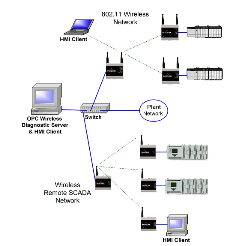

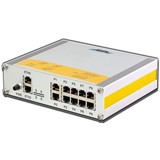


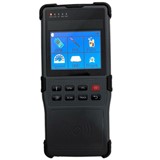
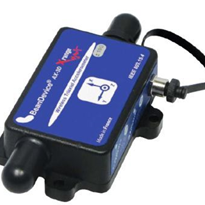
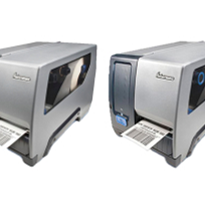
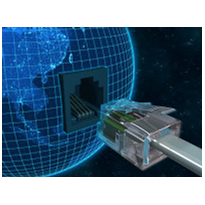
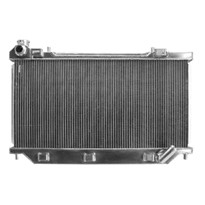
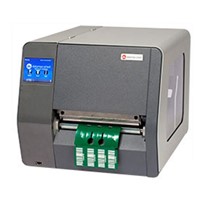
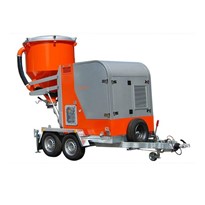
-205x205.jpg)
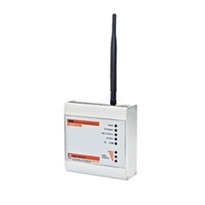
-205x205.jpg)
